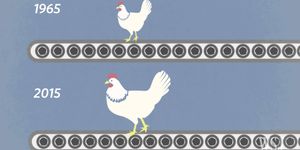Blue Origin Sticks Another Rocket Landing
For the third time in a row since its initial launch in November 2015, Blue Origin has managed to land its New Shepard rocket on solid ground after a space mission. The second successful landing was in February of this year.
Amazon CEO Jeff Bezos owns the company that launched the rocket into space, and as such, he can be seen on Twitter announcing his victorious landing.
Flawless BE-3 restart and perfect booster landing. CC chutes
— Jeff Bezos (@JeffBezos) April 2, 2016
deployed. @BlueOrigin
Although Blue Origin is working on a lower-altitude space rocket that could be used for commercial fare and SpaceX is working on a higher-altitude space rocket that can actually send larger spacecraft into space for NASA and other agencies, both commercial companies are in a somewhat neck-and-neck race to create the better reusable rocket.
Out of each landing attempt tried by SpaceX, only one of them has been successful, so Blue Origin is currently proving that they have a more reliable landing strategy than SpaceX. On the other hand, because the rockets are totally different in design and serve different purposes, it’s also slightly unfair to compare to the two.
Nevertheless, Bezos has a lot to brag about because reusable rocket technology is the wave of the future when it comes to space travel since it for better cost efficiency in rocket manufacturing. Bezos recently allowed news reporters into Blue Origin HQ, where they were able to get a glimpse of what Blue Origin was working on.
As first reported by Wired, Blue Origin tried some new techniques with its most recent rocket launch. Not only did Blue Origin tweak its landing algorithm a little bit so that the rocket boosters activate closer to the ground than before, but some instrumentation aboard the rocket were conducting experiments in the microgravity environment.
Because the new landing algorithms were successful, and more fuel efficient, you can expect Blue Origin will be using them from now on, or even experimenting further with them to continue to improve its landing technique.
Source: Jezz Bezos via Wired









